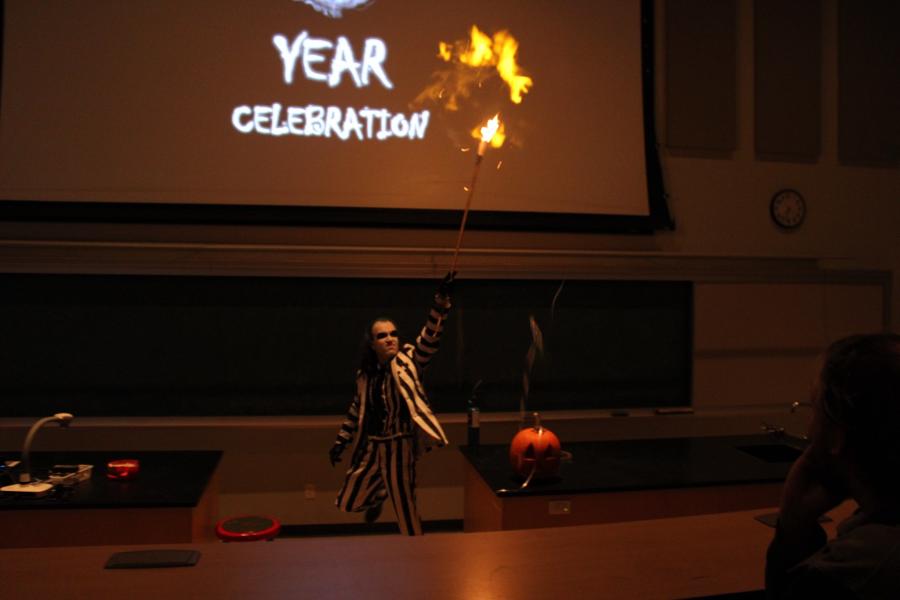Department of Chemistry and Biochemistry

IN A FLASH: This is CHEM-O-WEEN!
The fifth annual Chem-O-Ween, presented by С��Ƭ��Ƶ's Department of Chemistry and Biochemistry was its biggest and most exciting to date. It featured Halloween-themed activities, contests and four different themed rooms hosting fun and fascinating scientific demonstrations.
IN A FLASH: Fun With Future Flashes
Future Flash Days welcome high school students and their families to explore С��Ƭ��Ƶ and learn more about their areas of interest. Colleges, schools and departments offer tours and demonstrations to give these prospective students a taste of life on campus and С��Ƭ��Ƶ's many different programs of study.

Researchers Publish Groundbreaking Study on Environmental Impact of East Palestine Chemical Spill
Researchers from С��Ƭ��Ƶ and other institutions have published a study in the Royal Society of Chemistry's journal titled “Environmental Science: Processes & Impacts,” detailing the environmental consequences of the chemical spill and burn following a Norfolk Southern train derailm…
The Art and Science of Scientific Glassblowing
Behind every breakthrough experiment in the chemistry research laboratories at С��Ƭ��Ƶ, there’s a vital but often unseen craft – scientific glassblowing. Scientific glassblowing plays a pivotal role in research, ensuring that specialized glassware used in laboratories is precisel…
IN A FLASH: Kent Roosevelt Visits Campus
С��Ƭ��Ƶ's Department of Chemistry and Biochemistry welcomed students from Kent Roosevelt High School for a day of information sessions, demonstrations and tours of the university's state-of-the-art learning spaces.

INTRODUCING MEGAN BRATTLEY - HONORS STUDENT, ATHLETE AND FUTURE ONCOLOGIST
Megan Brattley, an Honors College senior graduating this spring 2025, was recruited by С��Ƭ��Ƶ as a softball player from the small town of Fleetwood, Pennsylvania. For two years, she played her heart out on as both a catcher and utility player, taking a break this year to focus on her academic goals, with sights set on a career in oncology.

IN A FLASH: Undergraduate Researchers Visit Kent
С��Ƭ��Ƶ welcomed undergraduate researchers from our university, Cleveland State University and the University of Akron to the Kent Campus for the 19th annual Northeast Ohio Undergraduate Research Symposium.

IN A FLASH: С��Ƭ��Ƶ's Smallest Scientists
Curious, young minds from the Child Development Center enjoyed hands-on learning about the ways the world works during a visit to С��Ƭ��Ƶ's Department of Chemistry and Biochemistry.

IN A FLASH: Cirque du Chem!
A circus came to the Integrated Sciences Building this spring in the form of "Cirque du Chem," presented the Department of Chemistry and Biochemistry.
